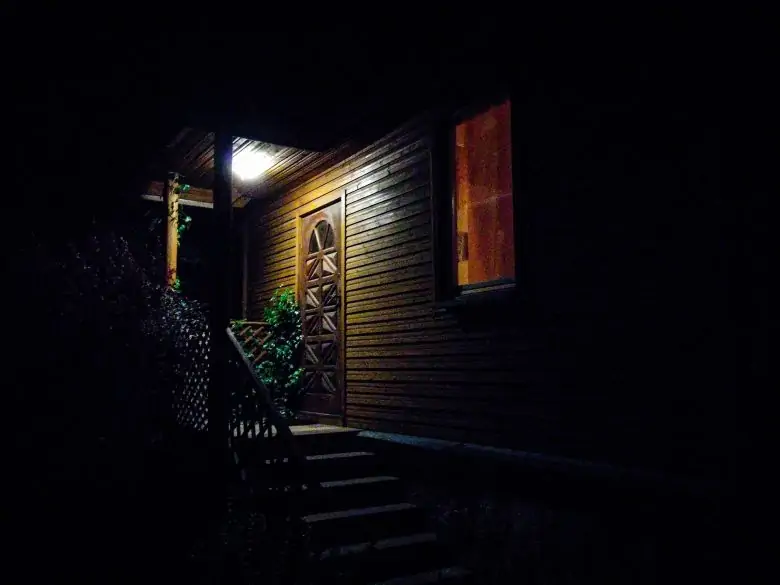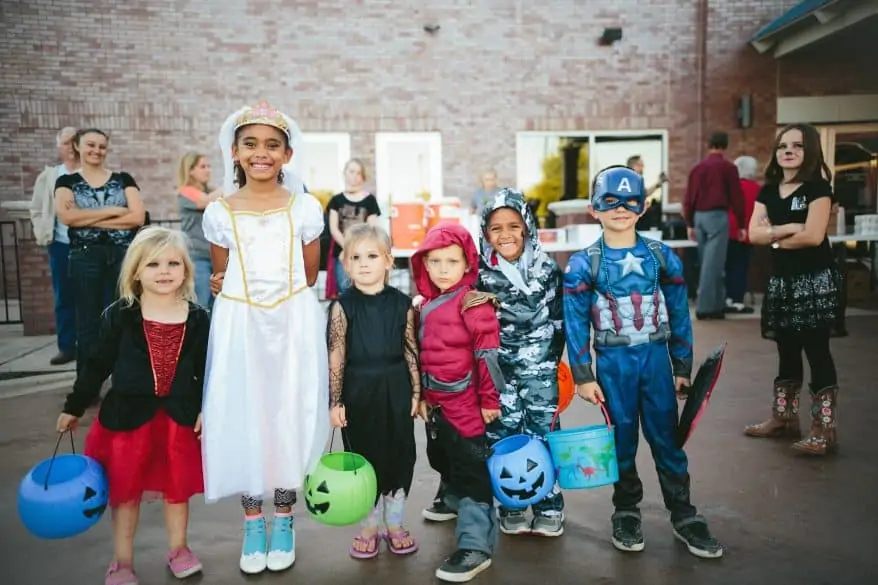Getting dressed up and going trick-or-treating is an honored pastime for children of all ages. Being able to pick out your own costume and go up to every door in your neighborhood is a right of passage throughout childhood. But for some kids, Halloween brings added challenges and can prove to be downright difficult. Children with special needs like to participate in the candy collecting, shenanigans and scares that only Halloween can bring. There are a few things that neighbors can do to make this process easier for all children especially special needs trick-or-treaters to be included.
Offer a Variety of Treats
Many children are now on gluten free diets or even have severe peanut allergies. It is important to have several choices in regards to these dietary restrictions. Also keep in mind any children that have other restrictive eating issues that might come knocking at your door. Offer neighborhood children a choice of treats. As children approach the door, ask any adults accompanying them if the child has any allergies or dietary restrictions. For example, perhaps the child has a sensitivity to sugary treats and drinks. Have some more wholesome alternatives on hand, such as fruit, cheese sticks or granola bars. Having non-food items such as a bucket of toys from the dollar store, might also be a good idea. That way everyone will leave with something and nobody gets left out.
Light the Way
Be sure to have your driveway and porch properly lit. Children that have a hard time seeing in normal conditions, will certainly need the added light when walking through a dark neighborhood. Also be sure to move any obstructions off of pathways and any area in which trick-or-treaters will be walking. Children with wheelchairs or adaptive equipment will be able to participate by being able to come to the door.
Put Your Pets Away
While it can be a lot of fun to include your furry friend in the excitement, some pets can scare would be trick-or-treaters. Children with sensory disorders are particularly affected by loud noises such as a dog barking. These sounds can be not only intimidating but also very scary. Therefore, it’s best that you arrange to hand out your candy in an area that your dog won’t frighten off children by barking. If you don’t have an area to keep the dog during the hours children will be trick-or-treating, ask a friend if they would mind keeping an eye on your dog at their house during that short period of time. This will keep not only your dog safe and secure, but will help to prevent any sensory overload or potentially detrimental scary episodes for any special needs trick-or-treaters that might stop by.
Limit the Amount of Horror
Halloween is the one day of the year where we can all dress up and try and frighten one another with antics and creepy costumes. Yet, too much of this is extremely dangerous for some children with special needs. Try to tone down the amount of popping out of bushes or gory makeup you will put on to pass out candy until later on in the night. Most younger children will go out and do their trick-or-treating earlier at night. If you can, keep things low key until later in the night to help prevent a meltdown of a young child or a child with special needs. Or, put a sign at the end of your driveway with a warning. Let parents know that your house is a bit scary and might not be a great stop for all families.
Be Kind and Offer to Help
Parents of special needs trick-or-treaters will probably have already worked very hard just to get their kids out the door! A tremendous amount of planning, preparing and implementing goes into a night like Halloween. Sometimes even more so for parents of children with special needs. With this being said, offer to help these parents when they come to your door. Or you see them around the neighborhood as you walk your own kids door to door. Offer to hold a bag, a door or to help carry a child up onto the porch with the other kids as they wait with their bags outstretched.
Allowing these families to go first will also help expedite the process and help curb meltdowns and tiredness. Lending a helping hand will not only help the family have a more enjoyable experience. It will also make you feel good for doing so in the process.
What else can you do to help? If you know of any children in your neighborhood that have special needs, reach out to their parents. Find out what kinds of snacks or treats they enjoy and can eat so that you are stocked up when they arrive on Halloween night. If you plan to go out trick-or-treating, consider asking the family to tag along. Not only the child with special needs but the parents will feel included as well. Following these tips will help increase the comfort level of special needs children and their parents that will be coming to your door this Halloween.





